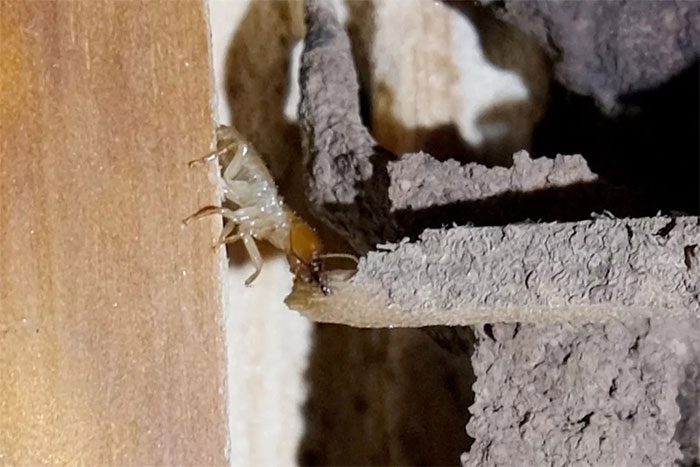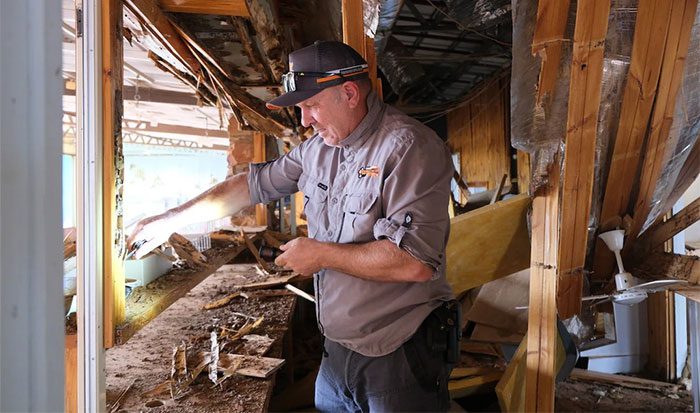Termites Have the Potential to Expand Their Range and Devastate Many Areas as Earth’s Temperature Rises.
In a forgotten restaurant behind a gas station in the Red Centre of Australia, only metal and plastic items remain undamaged.
The wooden door frame that Chris Cook grabbed was rotting. Meanwhile, the panels hanging from the ceiling fell down in chunks.
“Everything seems to be collapsing,” said Mr. Cook, the manager at Territory Pest Control, an organization that provides pest control services for residential and commercial properties.
The devastated scene in the Galaxy Auditorium restaurant at Wycliffe Well—a small rest stop along the highway in Northern Territory—is also being observed in many places across the continent, according to the Washington Post.
Mastotermes darwiniensis, commonly known as the northern giant termite, is the oldest surviving termite species. They are the last remnants of a lineage that once shared the Earth with dinosaurs 150 million years ago.
This species is known for its relentless destruction and reproduction. As climate change occurs, they, like others of their kind, are expanding their habitat.

A Mastotermes darwiniensis termite. (Photo: Washington Post).
Appearing in Increasing Numbers
A study conducted on six continents and published in the journal Science in September revealed the termite species’ “preference” for a warming planet.
“The response was truly surprising,” said Amy Zanne, a professor of tropical ecology at the University of Miami and the lead author of the study.
She gathered over 100 scientists to place wood blocks at 133 locations worldwide, then measured how fast the termites consumed the wood in different climate regions.
The study found that termites “go wild” for heat. For every 10 degrees Celsius increase in temperature, their “exploration and consumption of wood” increased nearly sevenfold.
“We observed termite decomposition rates increasing by up to seven times (for every 10-degree Celsius rise in temperature),” ABC News quoted Alex Cheesman, a senior researcher at James Cook University in Cairns.
The species in Australia is the most basal in the evolutionary tree. Also known as “mastos” or northern giant termites, they have super reproductive powers. Almost any member of the colony can transform into a reproductive queen. Furthermore, in addition to wood, they consume lead, leather, ivory, and even asphalt.
This species has long caused trouble for residents in the tropical north of Australia—its only known habitat. However, over the past two decades, they have started to spread further south.
According to Mr. Cook, the most concerning aspect is the impact they could have on the main town in Australia’s vast and isolated outback: Alice Springs, which has a population of 25,000 and is directly in the path of this termite species.
“The question now is when, not if,” he said. “Termites will come here, and when they do, they will cause a lot of problems.”
According to Evans, a biologist specializing in termites at the University of Western Australia, the northern giant termite first appeared about 20 years ago in Ti Tree, located over 1,287 km south of Darwin.
Now, it is a common pest there, gnawing at buildings and hollowing out local palm trees.

Chris Cook peeling the remaining wood from the frame at the restaurant to check for termite damage. (Photo: Washington Post).
Extreme temperatures have protected Australia’s arid lands from this termite so far. Like reptiles, termites do not generate body heat but absorb heat from their environment. Therefore, even in the tropics, when temperatures drop below 20 degrees Celsius, “these termites were virtually unable to move,” Evans said.
However, the freezing winter nights in Alice Springs are becoming less frequent. Average temperatures have risen about one degree Celsius since 1910, and the number of days above 40 degrees Celsius has doubled since 1950.
The Impact of Climate Change
Australia is not the only place experiencing worsening termite problems as the Earth warms.
For instance, according to Evans, people in Chicago (USA) who have previously faced few issues with termites may soon have to deal with a host of new challenges.
Similarly, “people in Toronto (Canada) who were unfamiliar with termite issues may start to encounter the same problems Chicago is facing.”
Modeling by scientists at Purdue University and the University of Lausanne in 2017 concluded that 12 out of 13 of the world’s most destructive termite species could significantly increase by 2050, given the current rate of global temperature rise.
Invasive regions could extend from Canada to Patagonia, Finland to Iran, New Zealand to Namibia, and even Greenland.
Meanwhile, two termite species in Florida have shown another potential threat as their habitats begin to overlap: hybridization leading to “super termites with high destructive power.”
Scientists at the University of Florida discovered in 2015 that Coptotermes formosanus and Coptotermes gestroi tend to mate during warm winters. The new termite species grows twice as fast as its parents.

In less than three years, the northern giant termites have destroyed the Galaxy Auditorium restaurant. (Photo: Washington Post).
Termites cause billions of dollars in damage worldwide each year. They also play a crucial role in the carbon cycle.
Approximately 20 million tons of methane are emitted annually, either into the ground or the atmosphere, from termites.
Alex Cheesman, a soil scientist at James Cook University, stated that the increase in termite populations could create a concerning climate feedback loop.
“As the world gets hotter, termites can thrive. The more termites that thrive, the more methane can be released into the atmosphere. The more methane, the hotter the climate becomes,” he explained.
Chris Cook shared how greenhouse gases affect the pest control industry and pests.
In 2022, for the first time in history, southern Australia faced an outbreak of the deadly tropical disease—Japanese encephalitis—as mosquitoes proliferated after floods, which scientists believe were exacerbated by warmer air.
In the USA, Lyme disease continues to spread as disease-carrying ticks move into new areas amid rising temperatures. In the UK, aphids are consuming more plant species due to warmer springs causing them to lay eggs earlier.
“Climate change is really good for our industry,” Mr. Cook joked. “There are more cockroaches, more rats, and more pests.”
However, despite this, writing for Bloomberg, international relations and energy journalist Javier Blas remarked that the reliability of climate change commitments is likely to decline as the energy crisis becomes increasingly complex in 2023.


















































